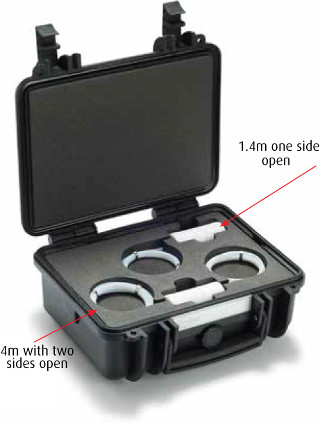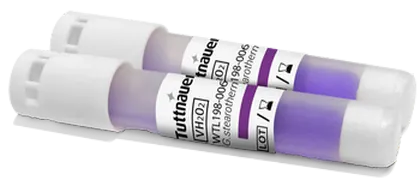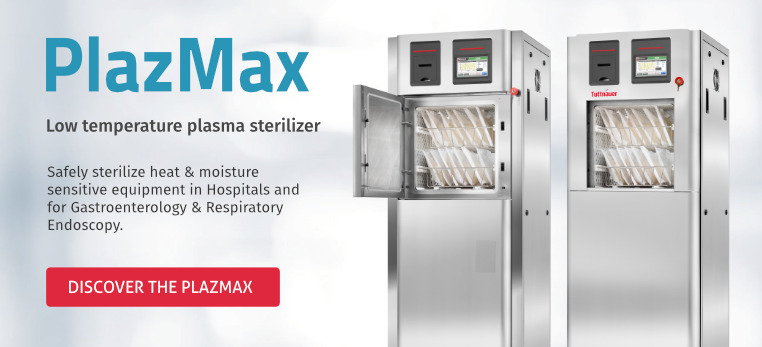The cost of a plasma sterilizer boils down to 3 components: Purchasing cost + the cost of running + the cost of not running.

Total Cost of Ownership (TCO) is the most critical figure you will need to evaluate the real price of your new medical device, and it is very different from the purchasing price. This article focuses on the Total Cost of Ownership of a Plasma Sterilizer and explains what to consider when making a purchasing decision. After reading this article, you will be able to compare different offers and make an informed purchasing decision. So let’s get down to business.
The TCO of purchasing a plasma sterilizer includes:
- Purchasing Price
- Direct Costs:
• Cost of Electricity consumption
• Cost of consumables
• Cost of maintenance and service - Indirect Costs:
• Cost of downtime
Purchasing Price
To determine the purchasing price first, ask yourself what is the needed sterilizer size? The size depends on the type and frequency of devices processed. The volume will determine your throughput, a larger chamber can treat bigger loads, and a smaller one will process less. Aim to locate the sweet spot that uses the minimum number of cycles to process all needed devices and instruments, saving you on extra cycles, and thus saving you on the cost per cycle. On the other hand, a sterilizer that’s too large will incur unneeded operating expenses, so you should aim at a chamber size that is exactly right for your needs.
Another critical factor to consider is the penetration power of your future sterilizer. A sterilizer that can penetrate the most challenging loads will serve you better for the long term as you cannot always predict which heat-sensitive instruments will be purchased in the future. A Process Challenging Device (PCD) will check for the most challenging loads, but it is preferable to also ask your vendor for the figures of the penetration power (usually measured by length and diameter) of the sterilizer.

When evaluating a sterilizer, it is also essential to check the quality of the components. Some sterilizer’s exterior casing is coated with plastic while others are made of stainless steel. Plastic exterior is prone to discoloration and distortion as it degrades with time, while stainless steel is expected to last much longer.
What is Your Cost Per Load?
Cost per cycle is probably the most important figure that will help you reach an informed purchasing decision. If you’re considering more than one supplier use this figure to compare the TCO between each offer. But you need to make sure you are comparing apples to apples.
Before doing your research, evaluate the number of loads your sterilizer is expected to process each day, week and month. The cost per load is fairly easy to calculate, it includes the cost of power consumption and cost of consumables. Multiply this figure by the number of expected monthly loads and you have the monthly cycle cost.
Start with the basics, what is the Electricity Consumption? Ask your vendor whether the sterilizer’s electrical connection is single-phase or a triple-phase. The advantage of a single-phase connection is that it reduces electricity consumption. An additional benefit of reducing power consumption is the positive impact on your facility’s carbon footprint, a goal that is a top priority in many organizations.
The Costs of Consumables
After checking the cost of power consumption, you can move ahead to evaluate the cost of consumables. This consists of the cost of the sterilizing agent - H202,the cost of your indicators: chemical and biological, and the cost of load packaging. When comparing different offers, it’s very important to check you’re not locked into a single vendor for consumables supply. Ask if your sterilizer is an open system that can use consumables provided independently.
- The cost of H202 consumption can dramatically affect your TCO. How do you calculate the cost of H2O2? The formula is straightforward. Ask your vendor how much H202 is used in each load for the specific device you’re planning to purchase. You first need to determine the average size of your load, which affects H2O2 usage. Some sterilizers use the full H2O2 amount per cycle, indifferent to the size of the load being sterilized, even if the full amount is not needed. A more advanced sterilizer is equipped with load detectors and only uses the required amount of H202, saving unused H202 for the next cycle. An additional advantage of the latter is that the processed instruments that are usually very delicate and expensive will only receive the required H202 dosage. This will lengthen the life expectancy of processed instruments as well as significantly reduce your H202 consumption.
- Another recurring cost that needs attention is the cost of indicators. As a rule of thumb, 15 chemical indicators are needed per cycle and 1 biological indicator per week. If you’re locked into one vendor for chemical indicators, you will probably pay more. An open system will make sure that you have more than one choice of indicators. Same is true for biological indicators.
- Expenses include paper and Tyvek packaging for instruments and endoscopes.

Cost of Training and Service
We have given you the tools needed to calculate the capital purchasing price, electricity costs and consumables costs. Now it’s time to take a close look at service and repair expenses. The first step in reducing these costs is to have a comprehensive preventive maintenance plan. Be proactive about maintenance and find out in advance its cost and quality!
Over the years, any sterilizer will naturally undergo wear and tear. Operational hindrances are simply a byproduct of regular use. To keep a plasma sterilizer working properly, it’s important to plan for and budget the resources for scheduled maintenance. This will help minimize unnecessary downtime and will maximize performance and functionality of your sterilizer. It will also help detect technical problems as they arise and not when it’s already too late.
Proper sterilizer maintenance depends on a balance of self-service and professional service. Therefore, you and your facility personnel must plan to execute checks: Daily and weekly as well as be prepared to schedule regular, thorough inspections by factory-trained and authorized service technicians. Authorized service technicians will perform maintenance as recommended by the manufacturer, thereby protecting your investment. Make sure software updates can be performed remotely and do not require the replacement of any hardware or the control panel.
Work with a vendor who will:
- Help you devise a preventative maintenance plan that is based upon your usage and throughput requirements. When evaluating an offer, make sure to inquire about maintenance kits and available warranties
- Check what training courses and technical support is provided via phone or online. Training courses can be beneficial if you have an internal technician who can address common maintenance issues.
- And obviously, make sure the plasma sterilizer is designed and manufactured for reliability, as this will significantly reduce maintenance costs over the unit’s lifetime. As mentioned, check the quality of components and penetration power of the sterilizer to answer this question.
During a sterilizer lifespan, various mechanical parts and electrical components will need repair and replacement. Purchasing a plasma sterilizer that has been manufactured with non-proprietary parts and components is the best way to protect your investment. Sterilizers built with non-proprietary parts ensure that future efforts to locate and replace these parts will be faster, less expensive, and involve less risk than trying to do the same for a sterilizer manufactured with proprietary parts.
If you purchase a plasma sterilizer manufactured with proprietary parts, you could be exposing yourself to a number of situations that could drastically hamper your facility’s future sterile processing capacity. Issues such as lead-time, availability, and price escalation should be taken into consideration.
The Cost of Not Running
A sore point is the cost of downtime, but even the most advanced technology might experience downtime and you should plan for this as well. One of the highest expenses is the cost of a machine that is not running. When a sterilizer fails and you are waiting for service to fix it, unprocessed endoscopes will hamper your ability to treat your patients. This, in turn, will trigger financial loss and damage your reputation, as well as jeopardize the health of your patients by delayed procedures. The price tag on downtime is hefty. What do you need to check to minimize downtime?
- As discussed above a preventive plan will minimize downtime. Make sure your purchase is backed up by quality training and a service plan.
- The average downtime – conduct primary research to answer this question. Look for facilities that use the sterilizers you’re evaluating and ask them if they experience frequent faults.
- Ask to see quality certifications – a sterilizer that is CE and FDA certified is a good start. Your sterilizer also needs to comply with your national regulations.
- Some sterilizers are more accessible to service and repair from others. You can use forums and groups of peer professionals to get an objective opinion.
If you follow these steps, you will be able to make a very clear and informed buying decision that can easily be communicated with management and the individuals involved in the process. We hope this article has helped you make an informed decision. If you still have unanswered questions, you are welcome to contact us, and we’ll be happy to provide expert advice.
About Tuttnauer: Tuttnauer is a global provider of end to end sterile processing solutions for hospitals, medical practices, dental clinics, including; Low-temperature Plasma sterilizers, advanced autoclaves, washer-disinfectors, indicators, and sterile processing products and consumables. The PlazMax sterilizer was explicitly developed for sterile processing of delicate, heat, and moisture sensitive tools including rigid endoscopes. The plasma sterilizer uses vaporized hydrogen peroxide for reprocessing heat and moisture sensitive equipment in CSSDs, Gastroenterology and Respiratory Endoscopy Clinics.
For further information and to inquire about purchasing options of PlazMax sterilizers, visit the PlazMax page on our website.
